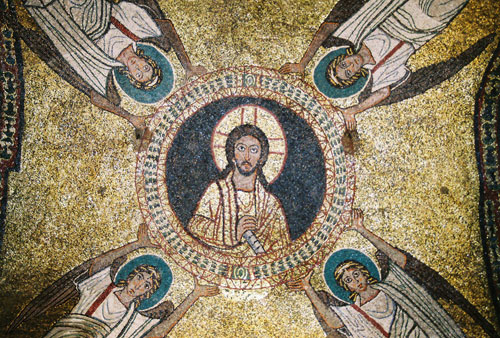
Michelangelo’s Sforza Chapel is just one of the hidden gems in Santa Maria Maggiore © Angela Nickerson
Vagabondish is reader-supported. When you buy through links on our site, we may earn a small affiliate commission. Read our disclosure.
Simplicity does not exist in Rome. Churches, museums, restaurants — they are layered with the art from generation upon generation. The artists and architects of each era competed to leave their stamp on prominent buildings in the city. In doing so, some removed the work of their predecessors while others simply crammed their own work into the blank spaces.

The Basilica di Santa Prassede houses some of Rome’s oldest Christian mosaics © Angela Nickerson
The typical basilica-style church usually features small chapels lining a larger nave space. When a guidebook says that a church holds works by Caravaggio, Michelangelo, Raphael, or any number of other great Italian artists, chances are the highlighted works are in a smaller side chapel. For example, San Luigi dei Francesi (Piazza San Luigi dei Francesi) contains three of Caravaggio’s greatest paintings. However, the pieces aren’t over the altar or in the nave. They are in a small, side chapel near the front of the church.
Likewise, Santa Maria Maggiore (27 Via Liberiana) boasts work by Michelangelo, but it isn’t the church itself. Rather, Michelangelo designed the small and elegant Sforza Chapel which was built after the great artist’s death. And just down the road is the Basilica di Santa Prassede (9/a Via de Santa Prassede/Via San Martino ai Monti). The outside of this church belies the fact that inside are incredible 9th century mosaics.
Look around — and consult a guidebook. That little nondescript church down the street might just house something priceless.
Roman Rule of the Day
Most churches in Rome are free, however, the cost to restore and to maintain the city’s collection of art is enormous. Most donation boxes indicate where your contribution is headed. Look for the containers marked “per restauro (for restoration)” to support your favorite church’s efforts.


